We’re excited to share one of the most beautiful projects we’ve ever done – Folk Art fabric arpilleras!
These three-dimensional quilts known as arpilleras were inspired by our teacher Sarah’s Peruvian mother, who kindly lent us these beautiful quilts from her personal collection.
(Miss Sarah, by the way, finished her Masters in Art Ed and is living in Southern Spain right now, enjoying the sweetest teaching gig at a school within walking distance of her pueblo. We miss her just a little. If that lifestyle sounds dreamy to you too – go follow her travels and artsy experiences on Instagram, @studio.sphere)! Tell her we sent you 🙂
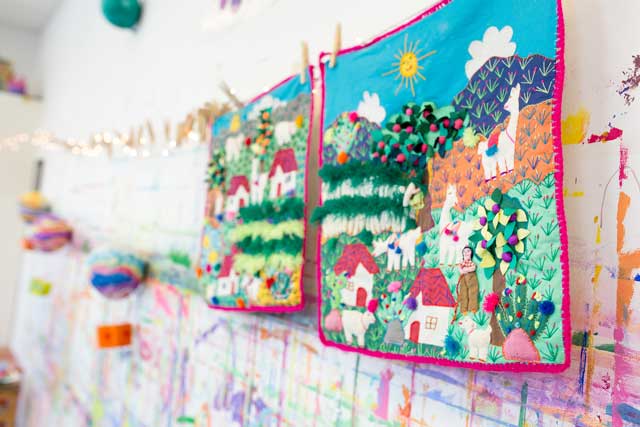
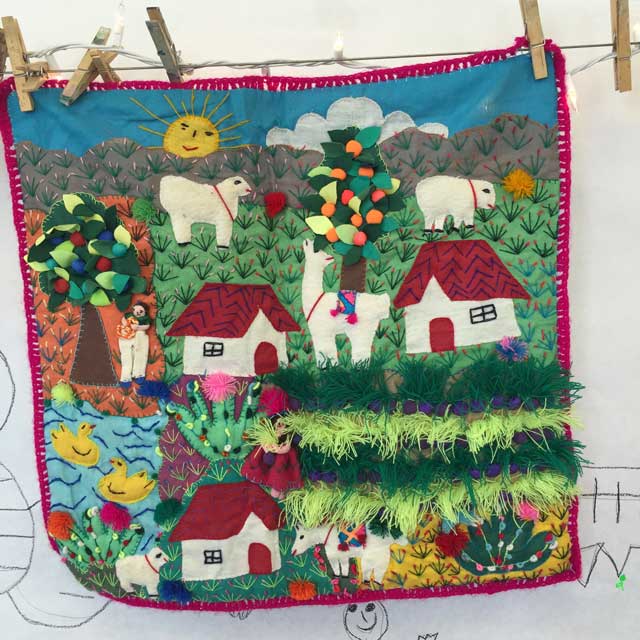

A little history: Arpilleras originated in Chile as as an expression of protest against political oppressive and economic injustice during the dictatorship that started in 1973. The women who created these appliquéd scenes were able to earn an income from their artistry at a time when there were few other employment opportunities. A lot of the colorful arpilleras that are made today come from Peru or other countries that have experienced similar oppression, and reflect tranquil pastoral scenes of rural life in the Andes mountains.
The Supplies + Set Up
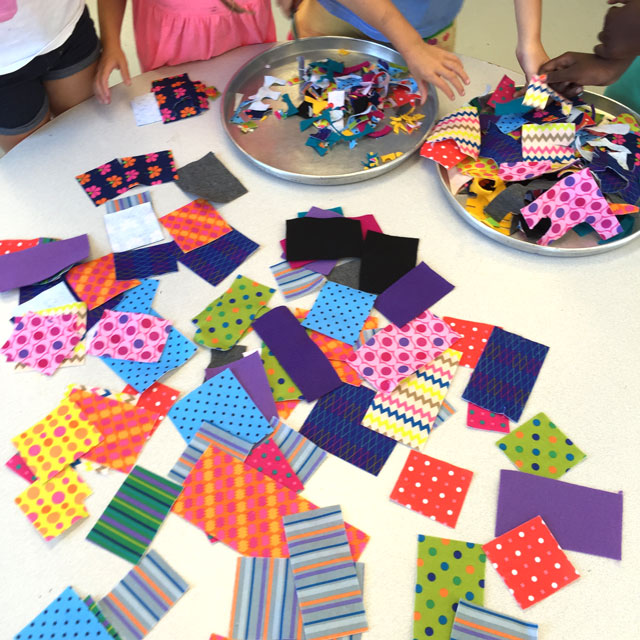
We used a 16×16 piece of cotton fabric as the base for our arpilleras. After discussing the history and heritage of these beautiful pieces, children naturally noticed and appreciated all the little details of the story that they depicted.
We used a ton of fabric scraps of various textures, along with stiff patterned felt, which really made this project stunning in my opinion. Fabric and felt are almost impossible for kids to cut, so the stiff felt really helped with that as well. (Pro tip: as a starting point, force kids to use scraps – do not give children a whole piece of felt because they will invariably make a bee line directly to the center to cut the tiniest shape out of the middle! If anyone has insight as to the spatial / cognitive issue happening that seems to make that a universal thing with ALL children, we’re all ears!). As with paper, our “no waste” studio policy is that unless fabric and felt scraps are invisible to the naked eye, they are big enough to stay in the scrap bowl for others to use. Then they become confetti!
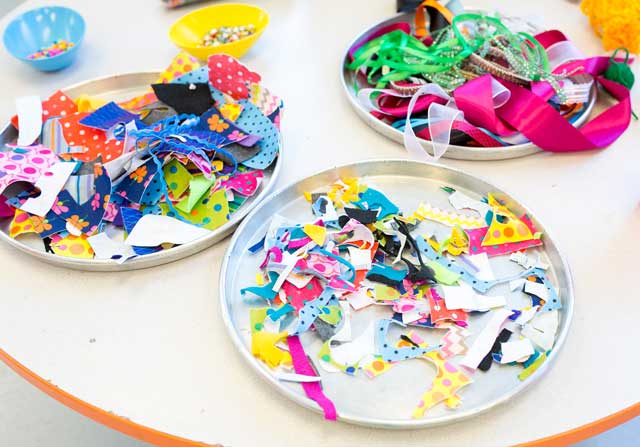
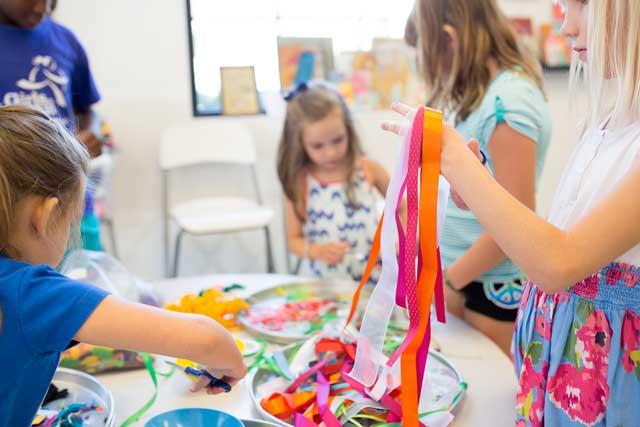
We also provided a table of colorful and inspiring ribbons, trims, yarn, ric rac, embroidery floss, and small soft embellishments (pom pomps, fabric roses).
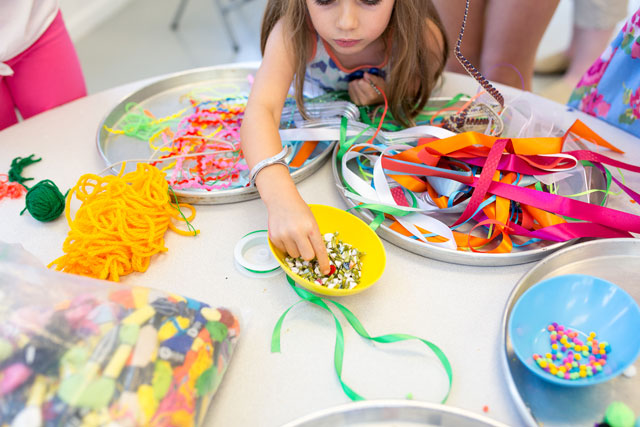
How We Did It:
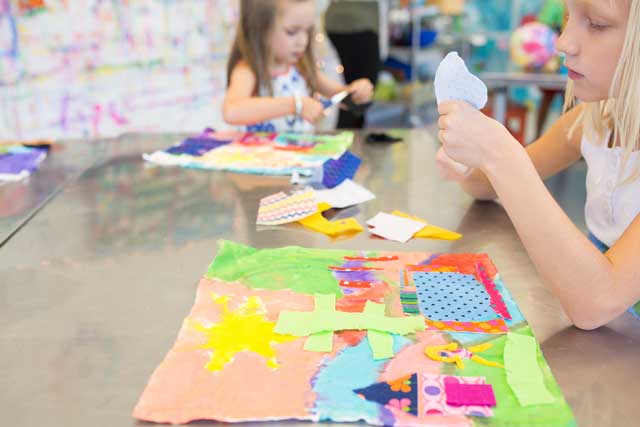
The process of building up the scene was very similar to what we would use for a paper collage. One technique that works for us is to not put out any glue until all the cutting and layering is done.
So they basically dry fit the whole thing first, while we encourage (aka push) them to get progressively more and more detailed. We’ve found that if we let them glue as they go, not only does it get very glue-y, but they mysteriously lose interest in the cutting and layering part and getting them to add the cool details is like pulling teeth. So we all work together for a long time just cutting and layering, while we play a fun word game: anyone who says the words “done” & “finished” have to add five more things! Then it’s not US telling them to keep working, it’s their classmates who find it hilarious when someone forgets and says one of those words!
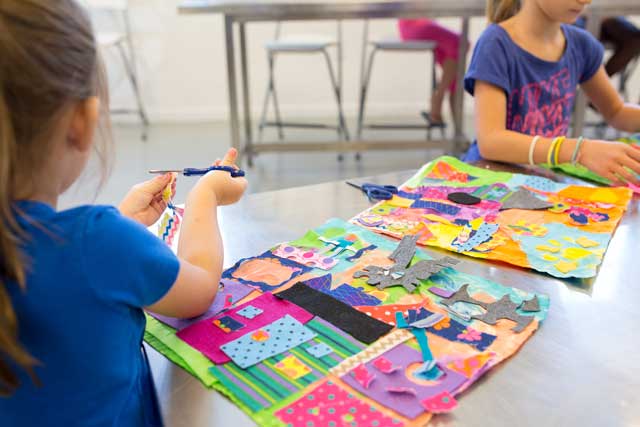
Before gluing, they gently remove all the pieces and set them off to the side. Even if they get all piled up, we’ve never had anyone not be able to remember where something goes. We used regular school glue in squeeze bottles and spread with small stiff glue brushes. The glue soaks into the fabric, especially the felt, so you really have to put it on very thick. It worked but I’m sure it would be better to use a fabric glue.
This entire project is really full of great emotional and physical challenges for kids – it’s definitely an exercise in patience and perseverance. Not only is the fabric challenging to cut, but when they start gluing, they have to have a lot of patience! “Miss Jennifer, my gluuuuueeee isn’t wooooooorking!!!!”
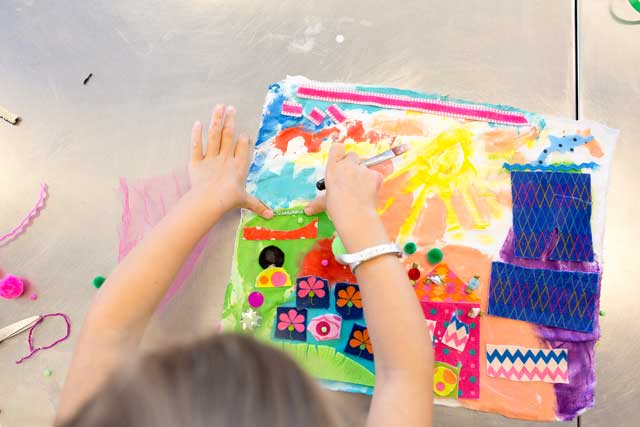
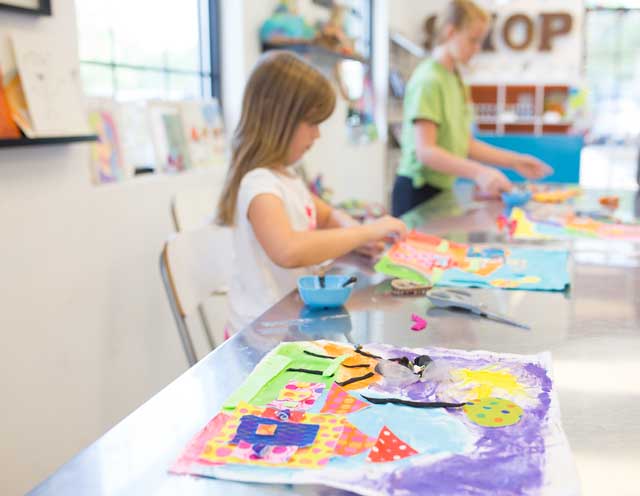
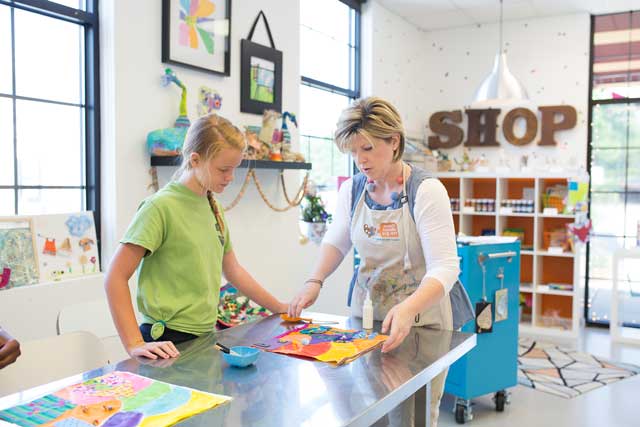
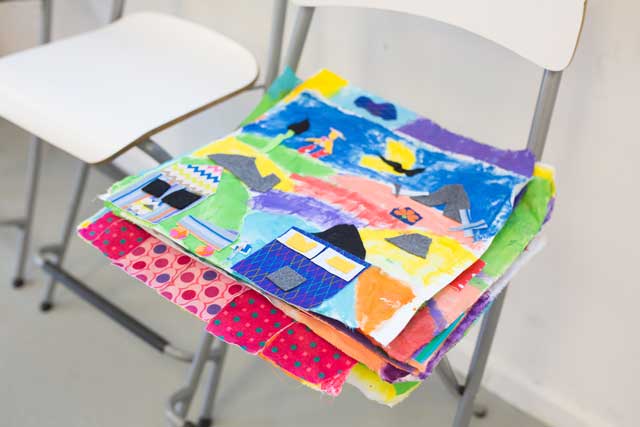
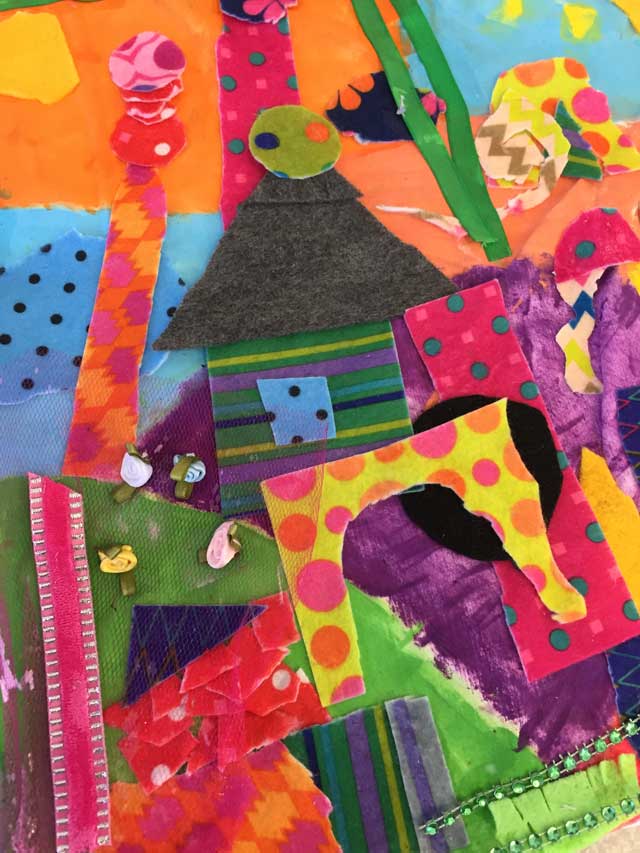
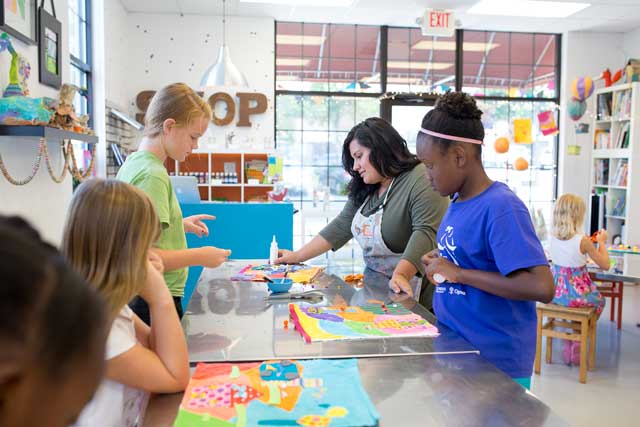
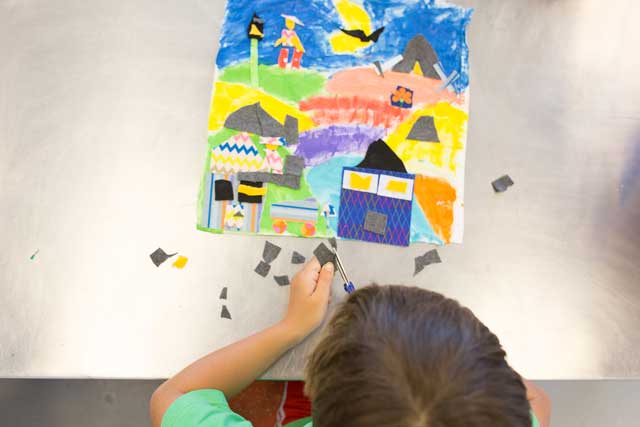
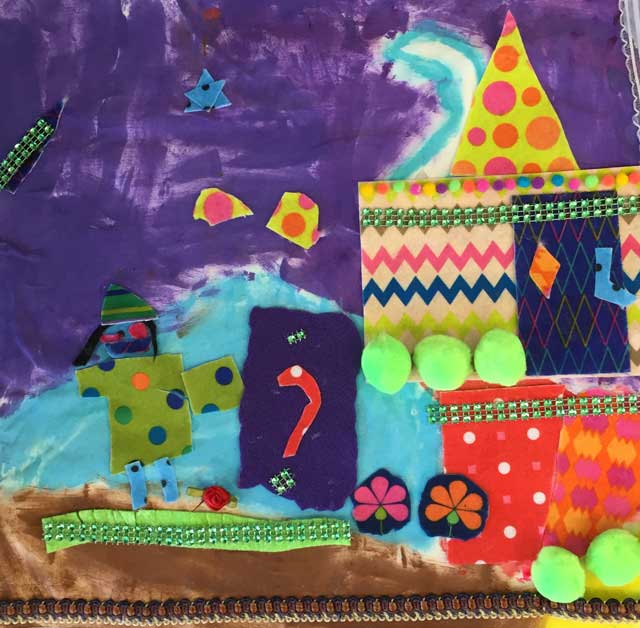
Everyone did such a great job with the little details. It took us a while to interpret what was going on in their scene and fully appreciate everything they included in their picture. Some kids included people and animals (oh, that’s a donkey!! I see it now!) – ponds, waterfalls, mountains, oceans… They were all stunning!
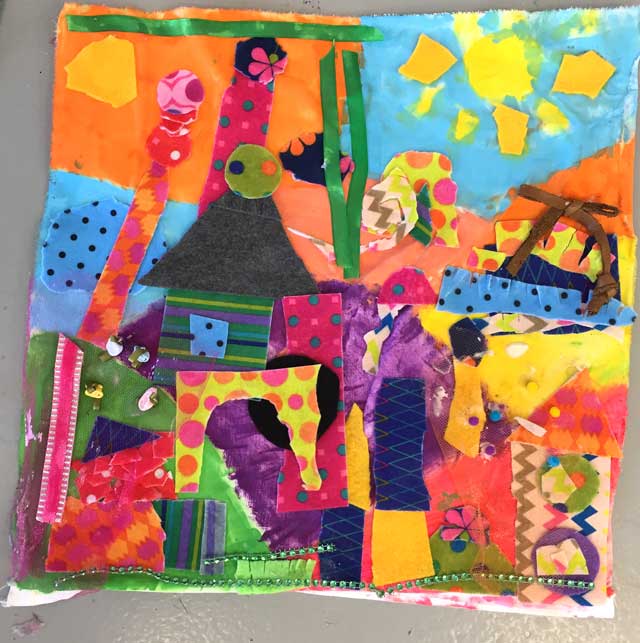
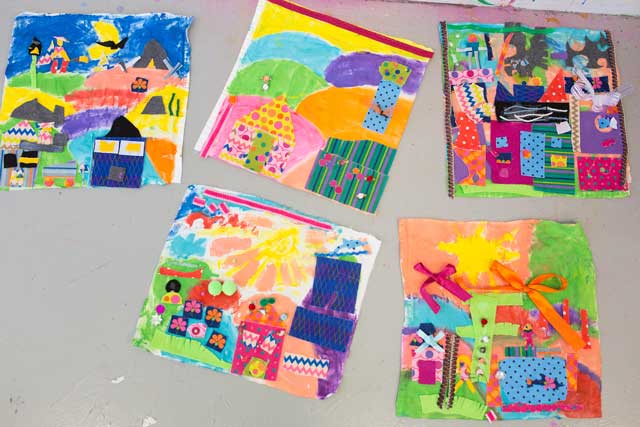
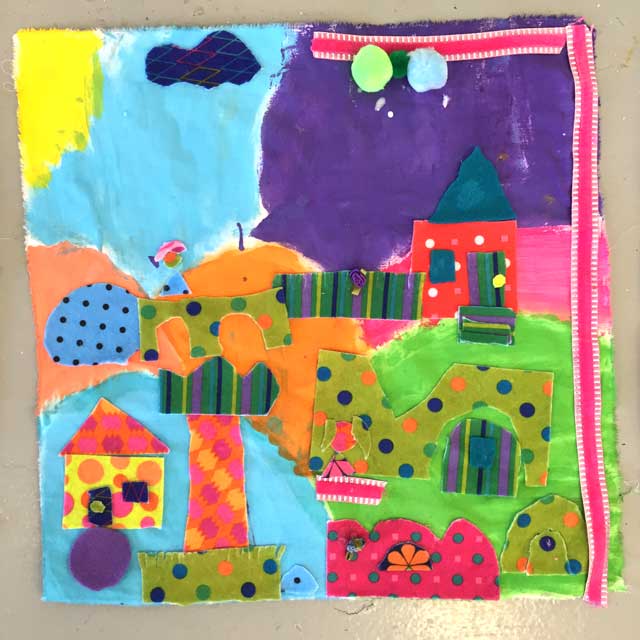
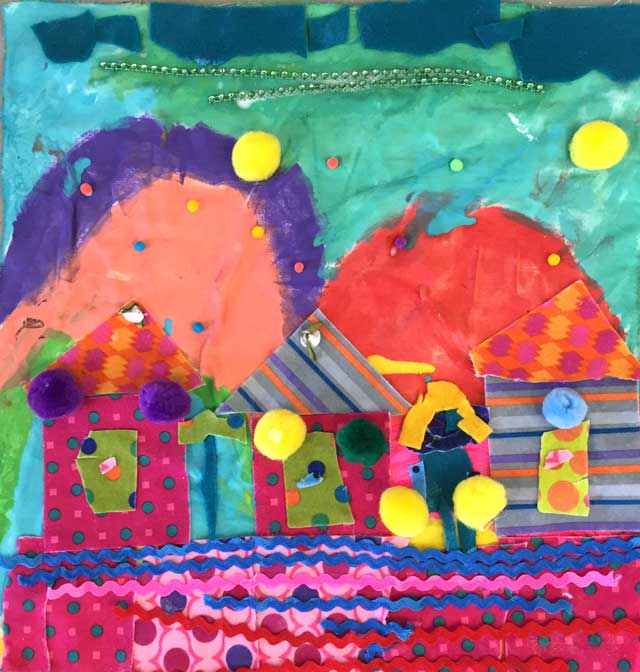
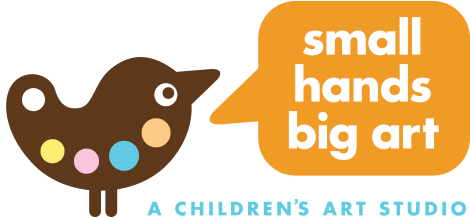

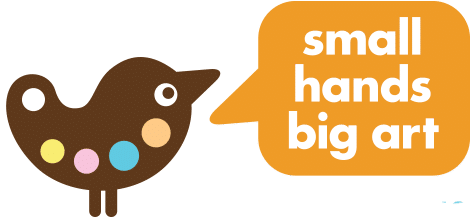

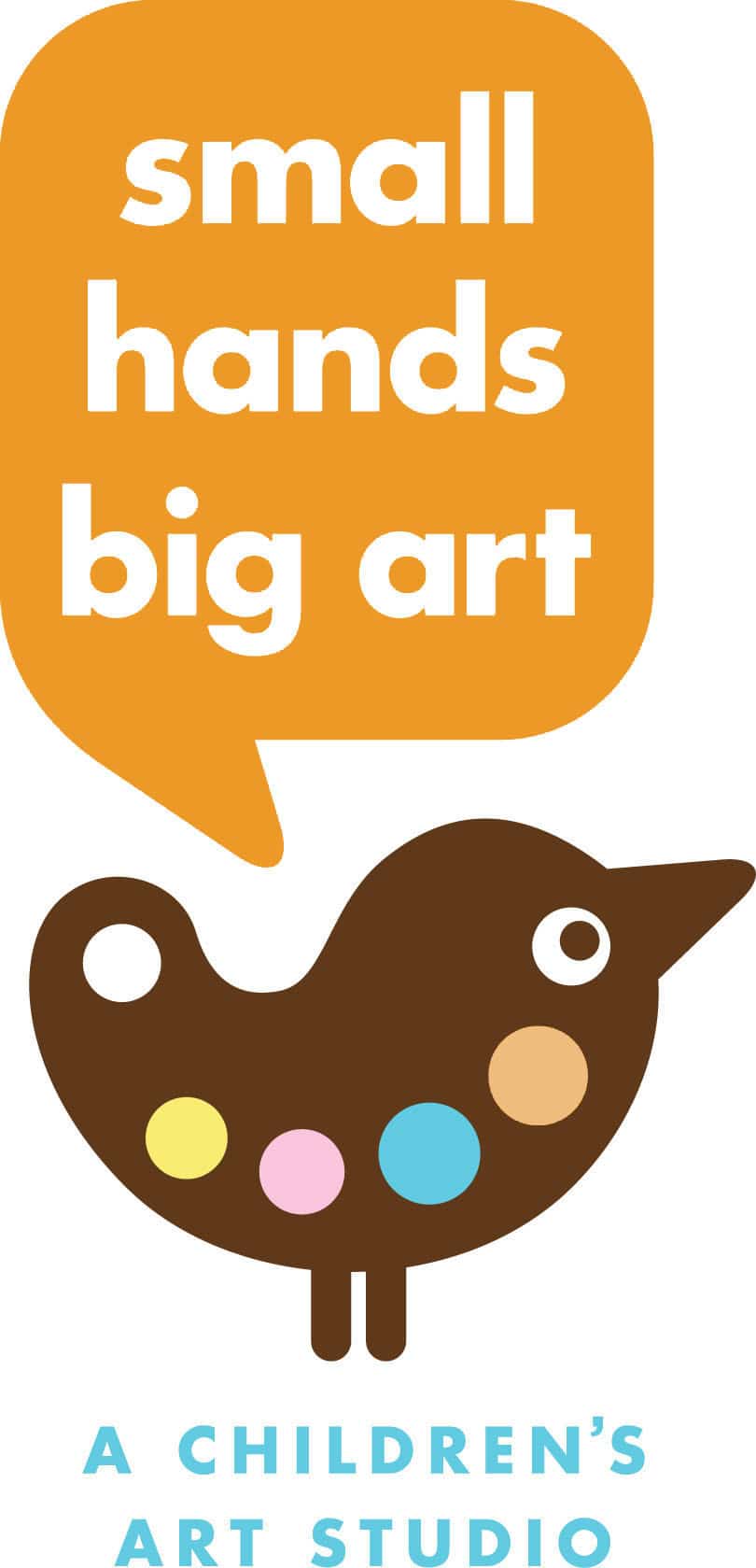
They are all gorgeous artworks !!!!